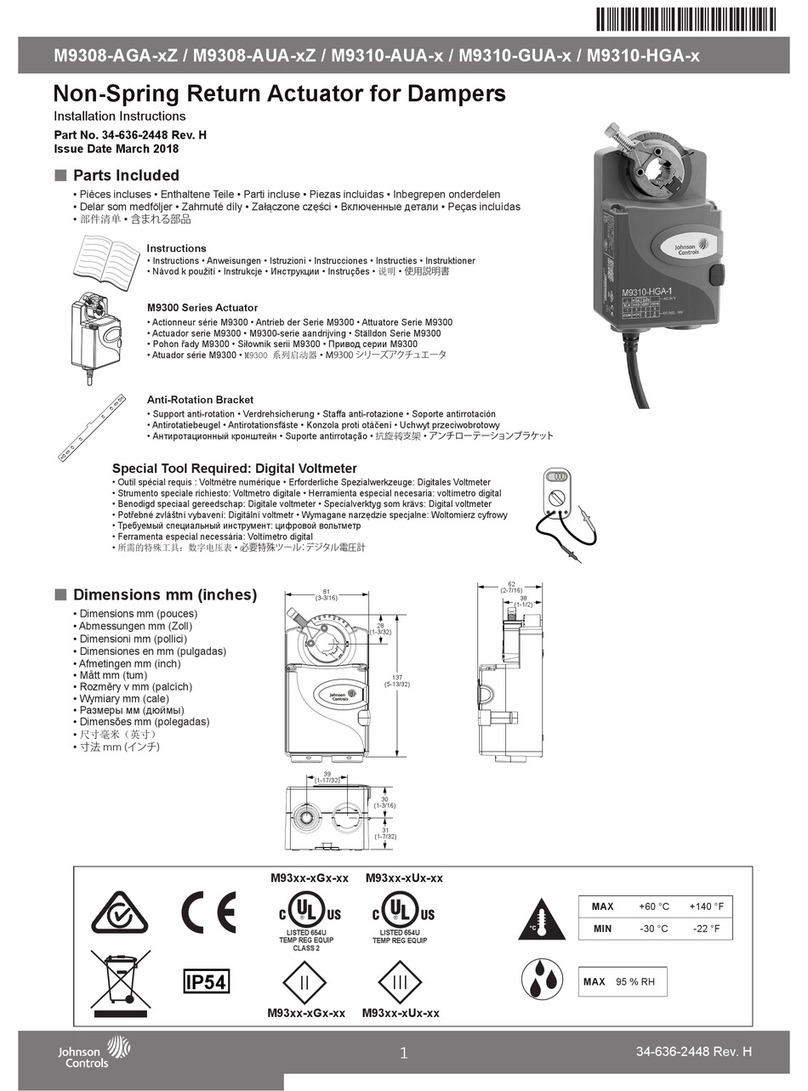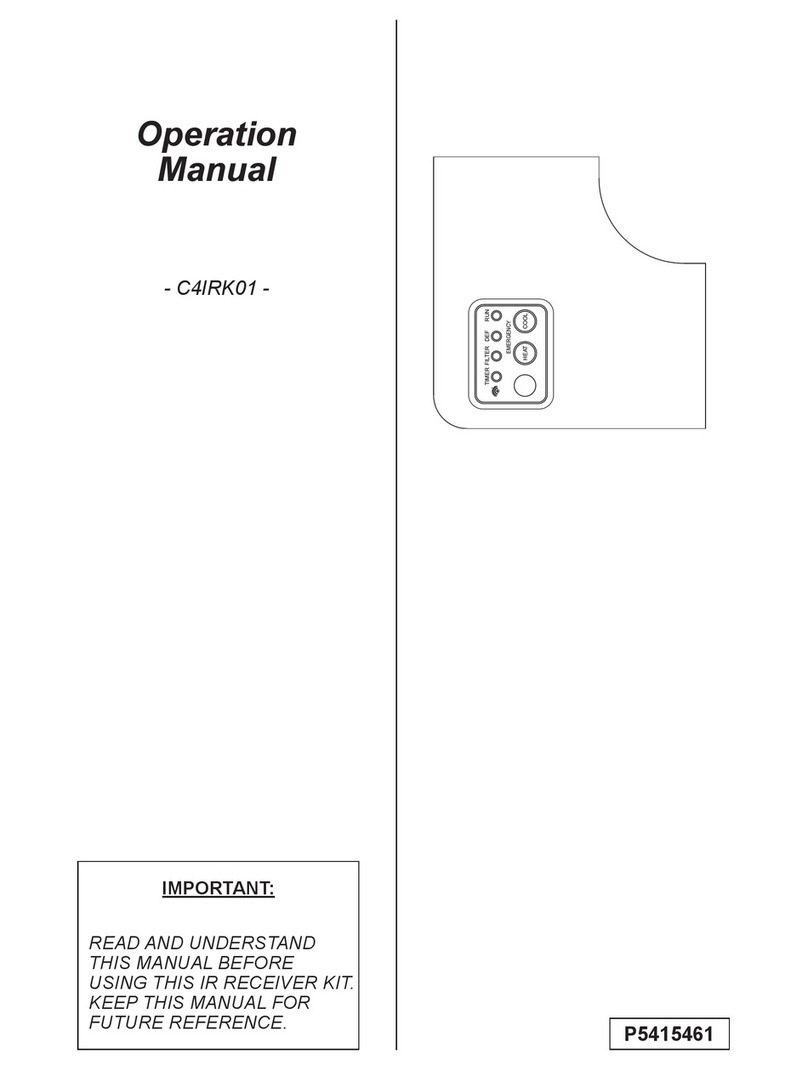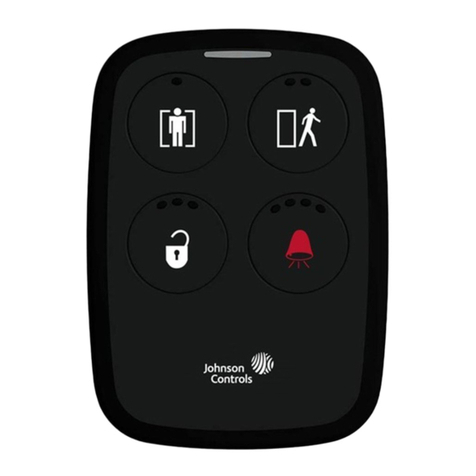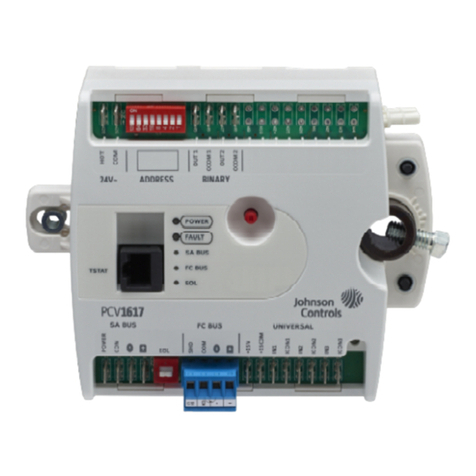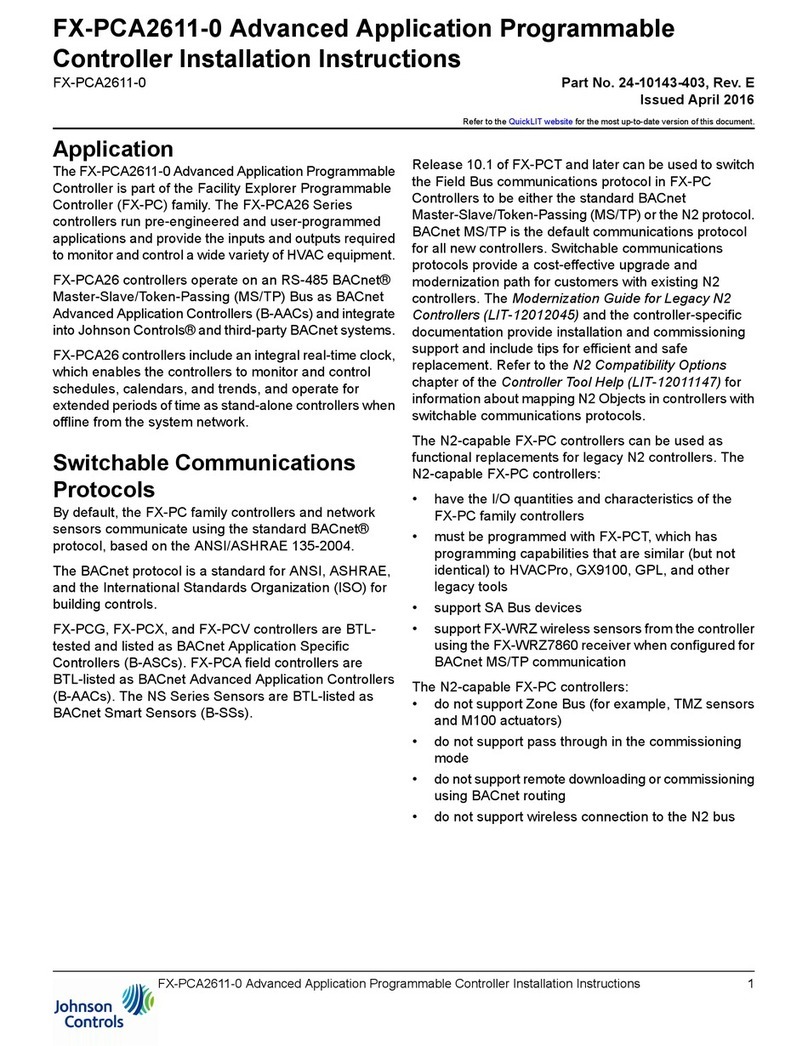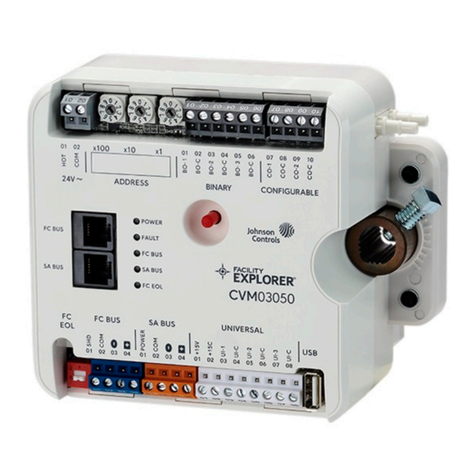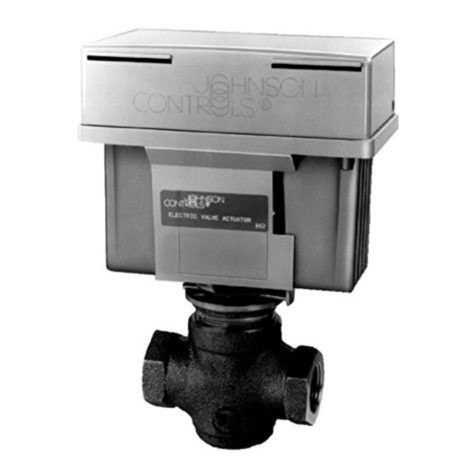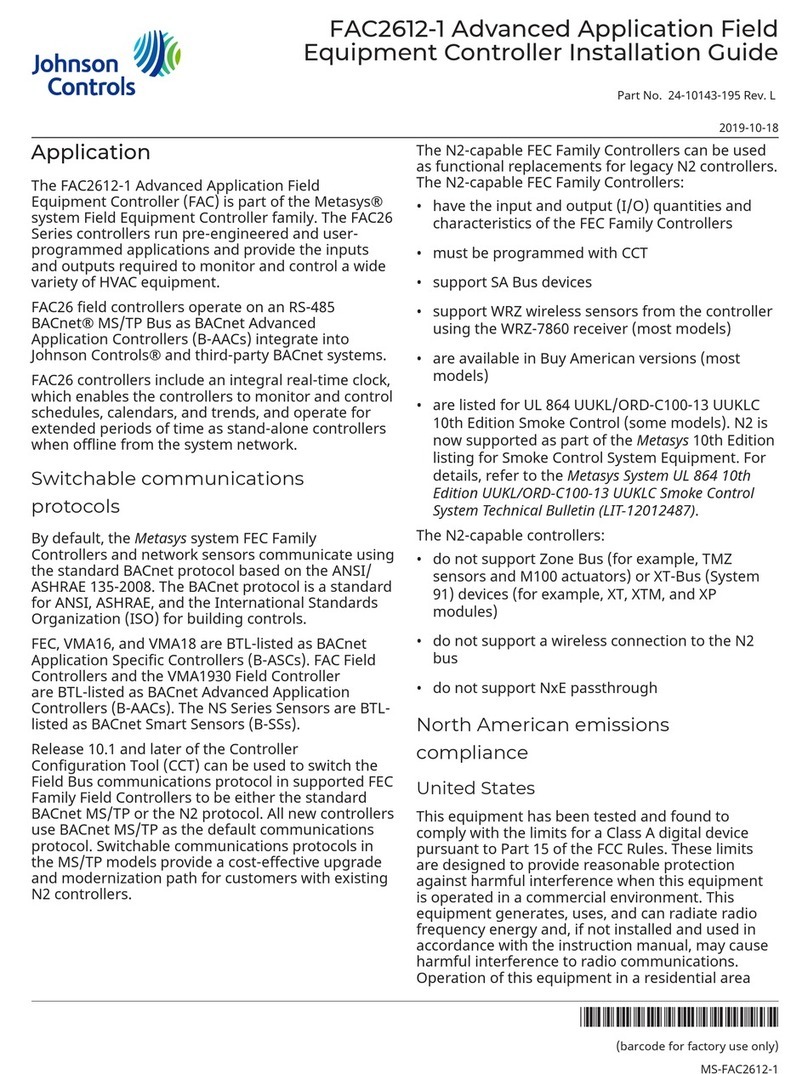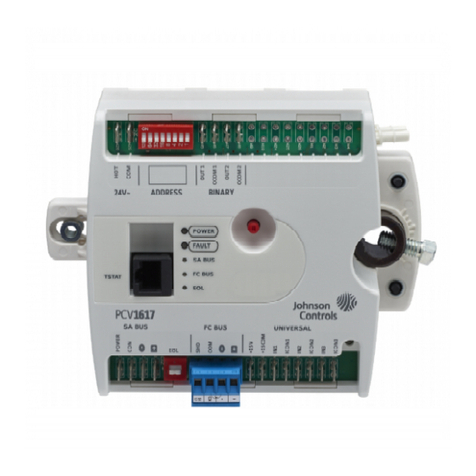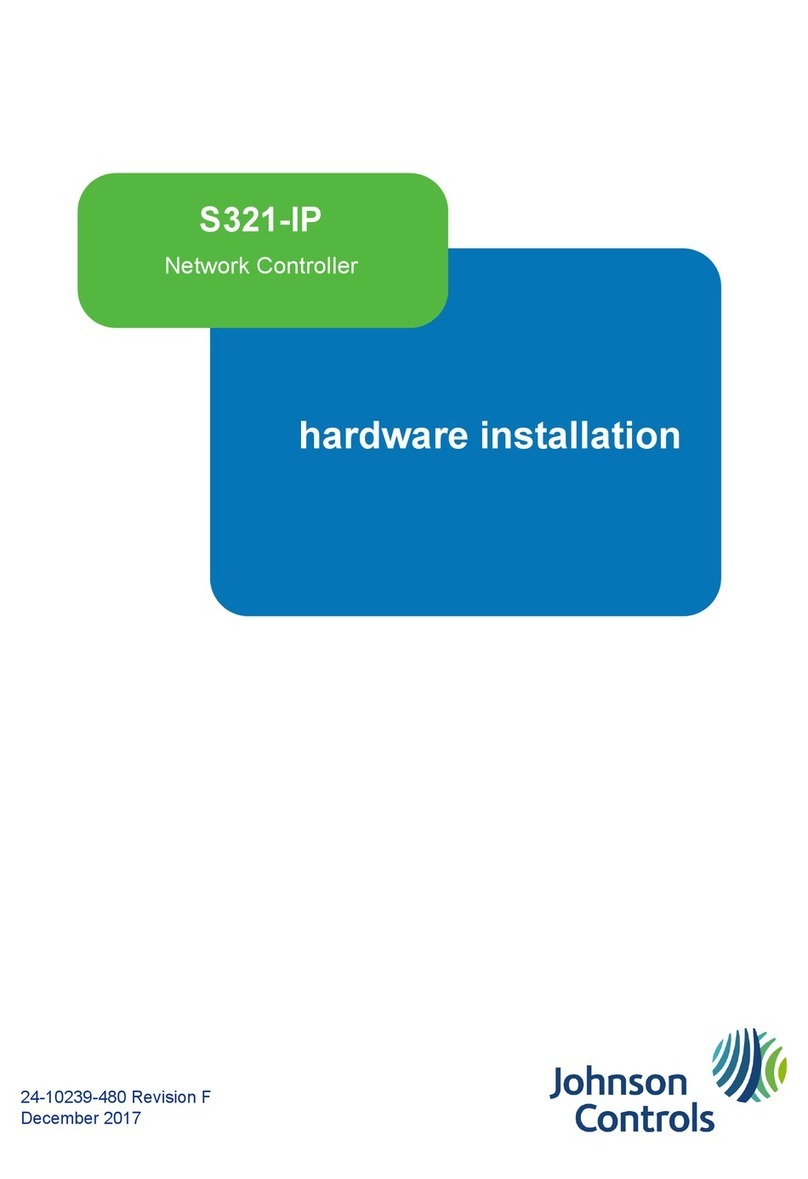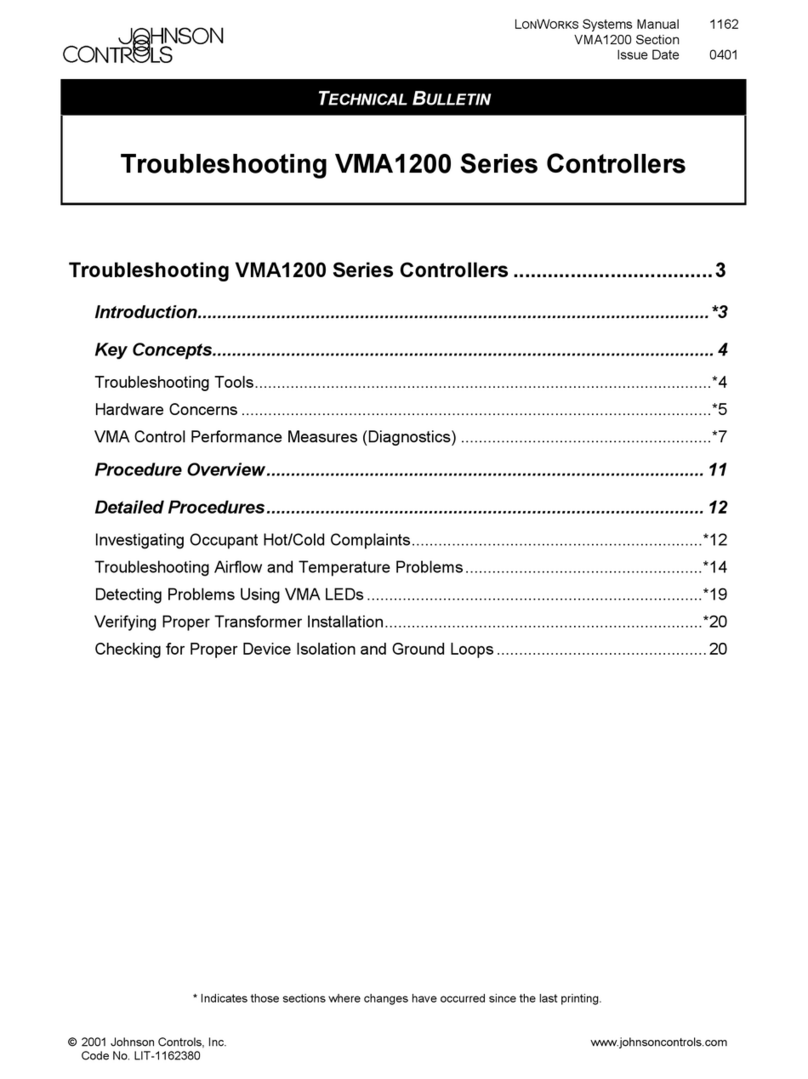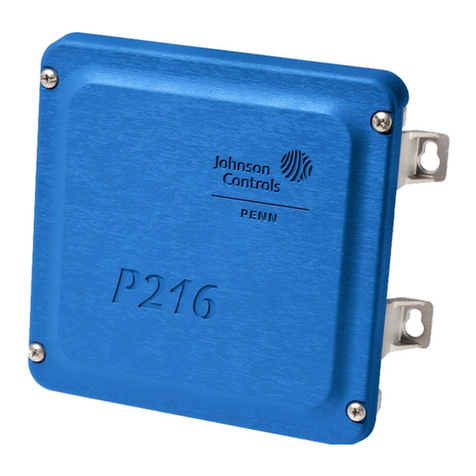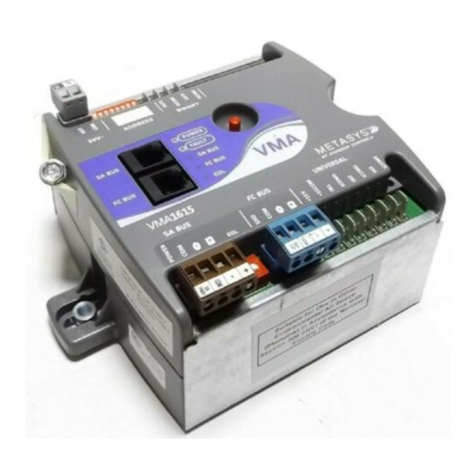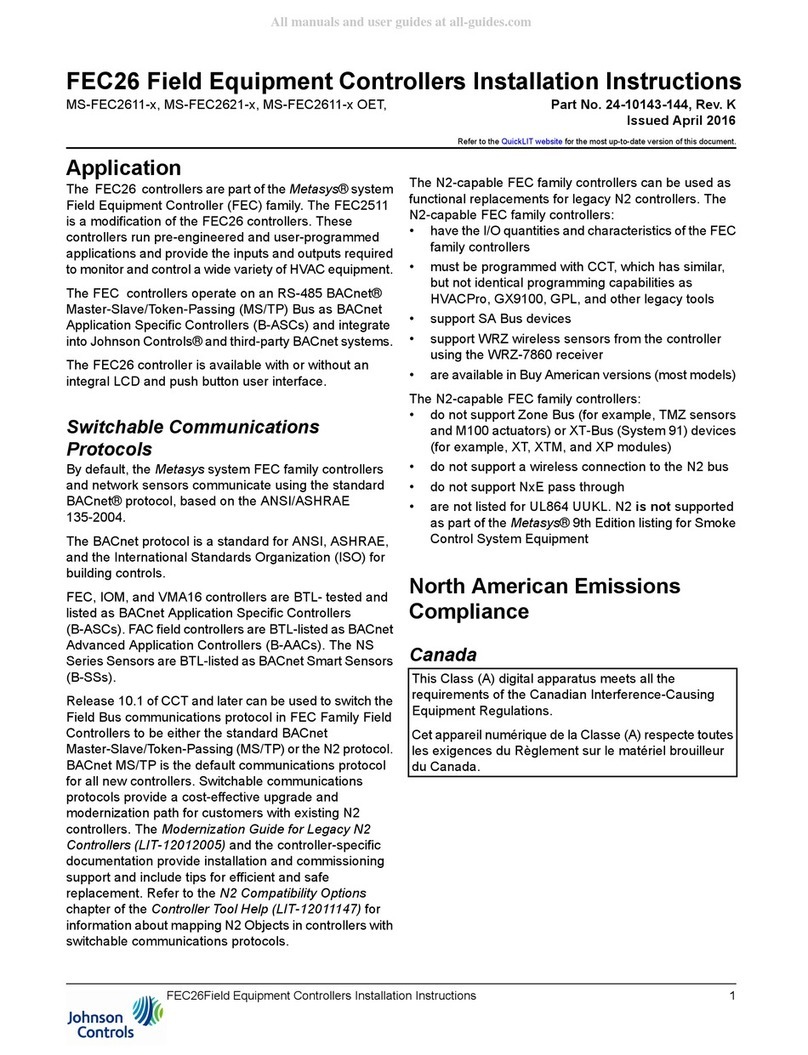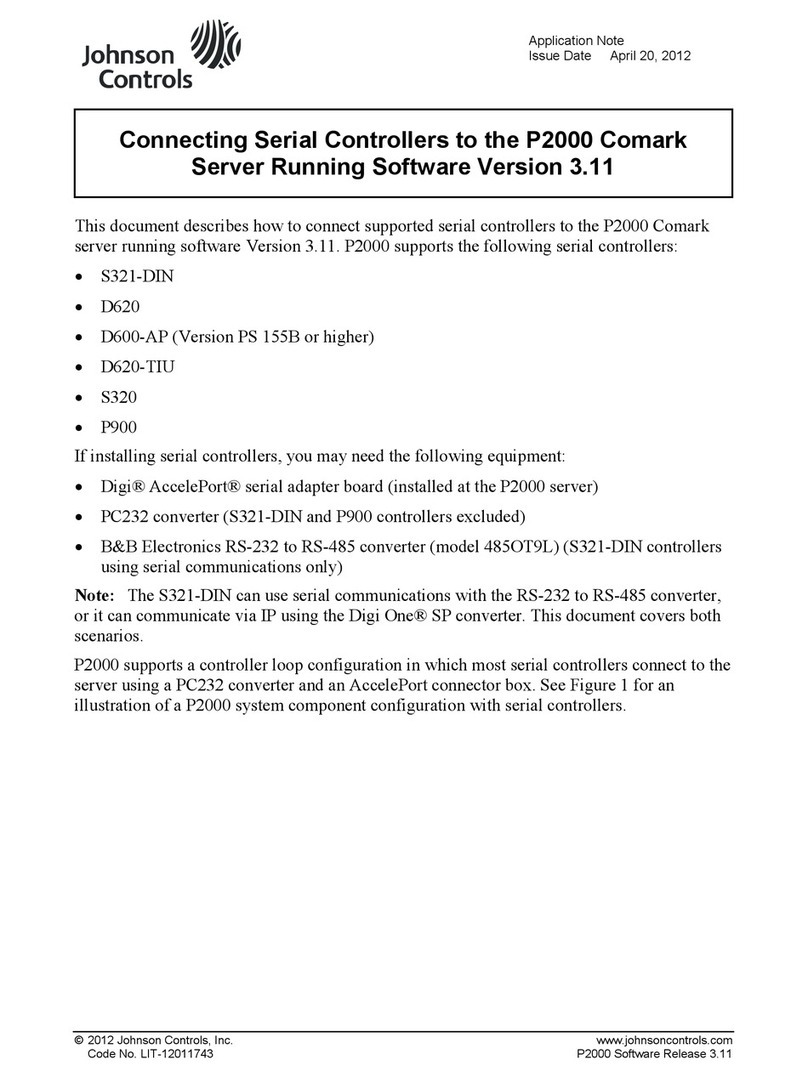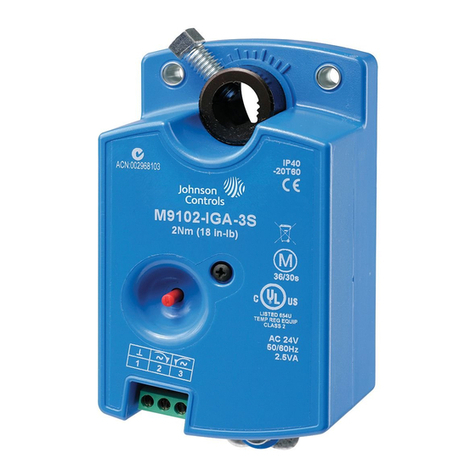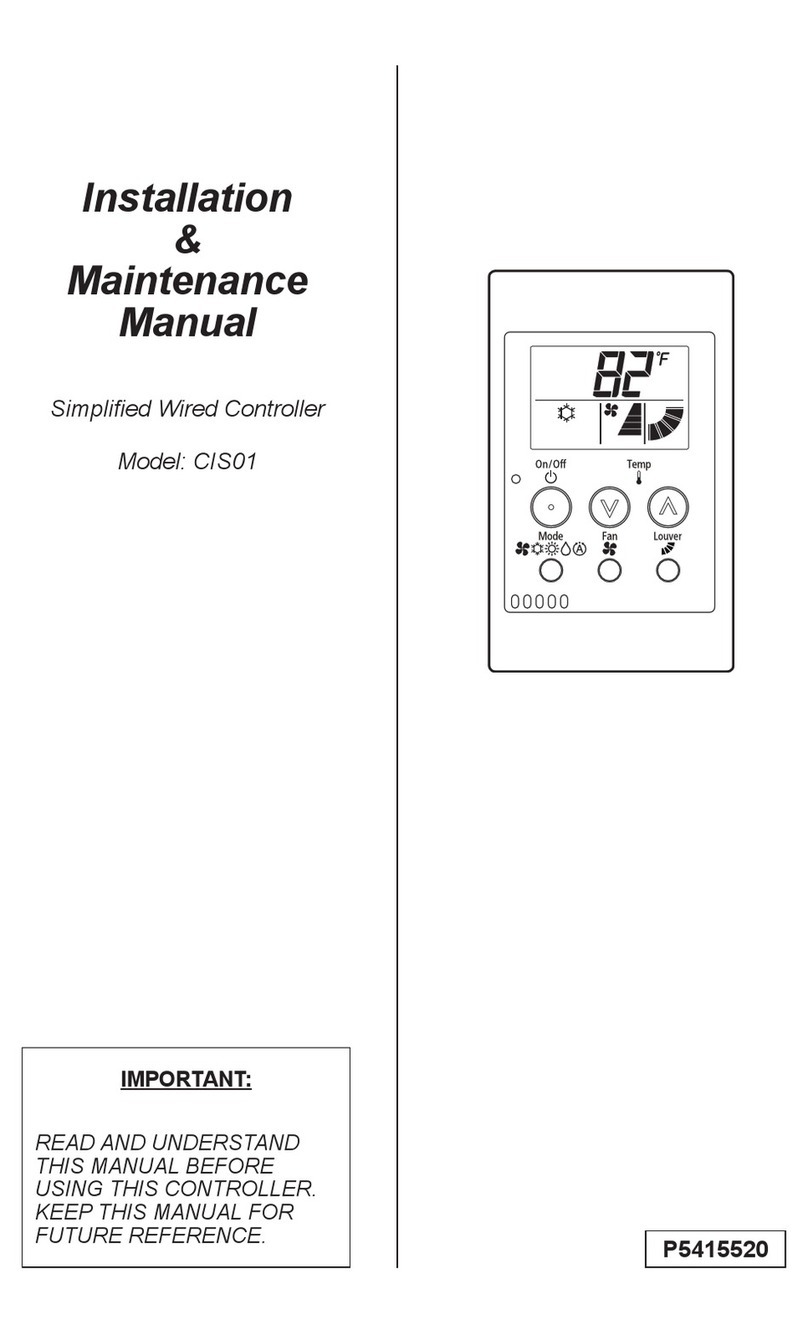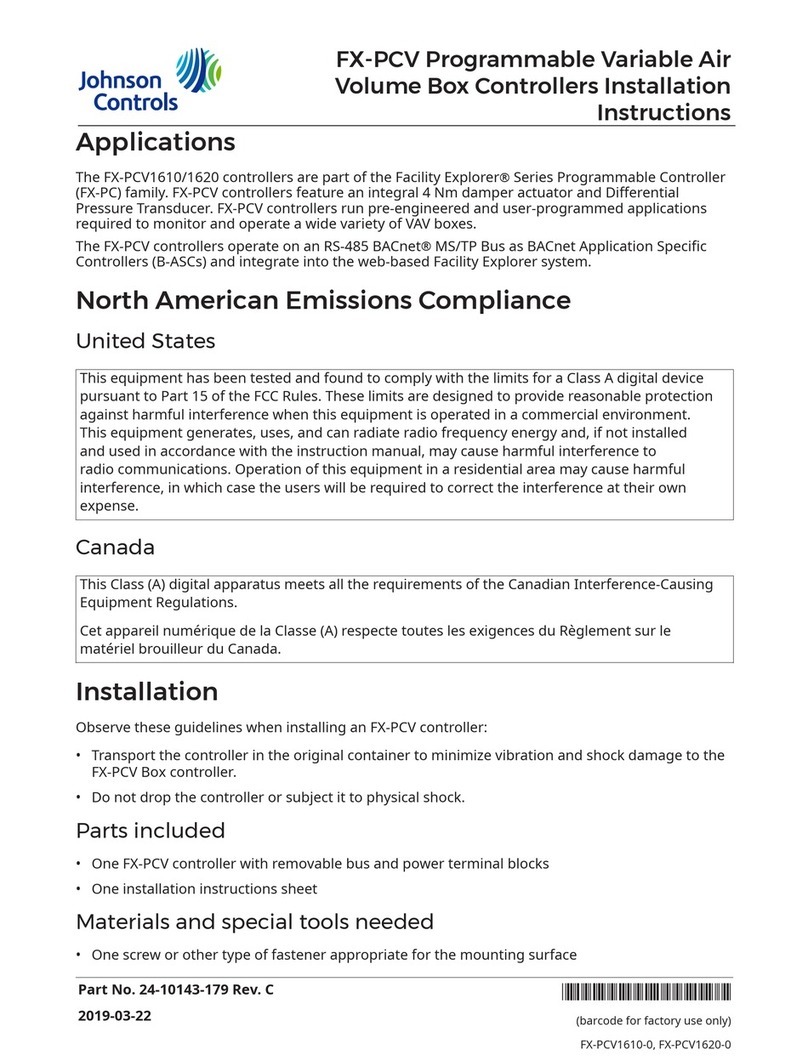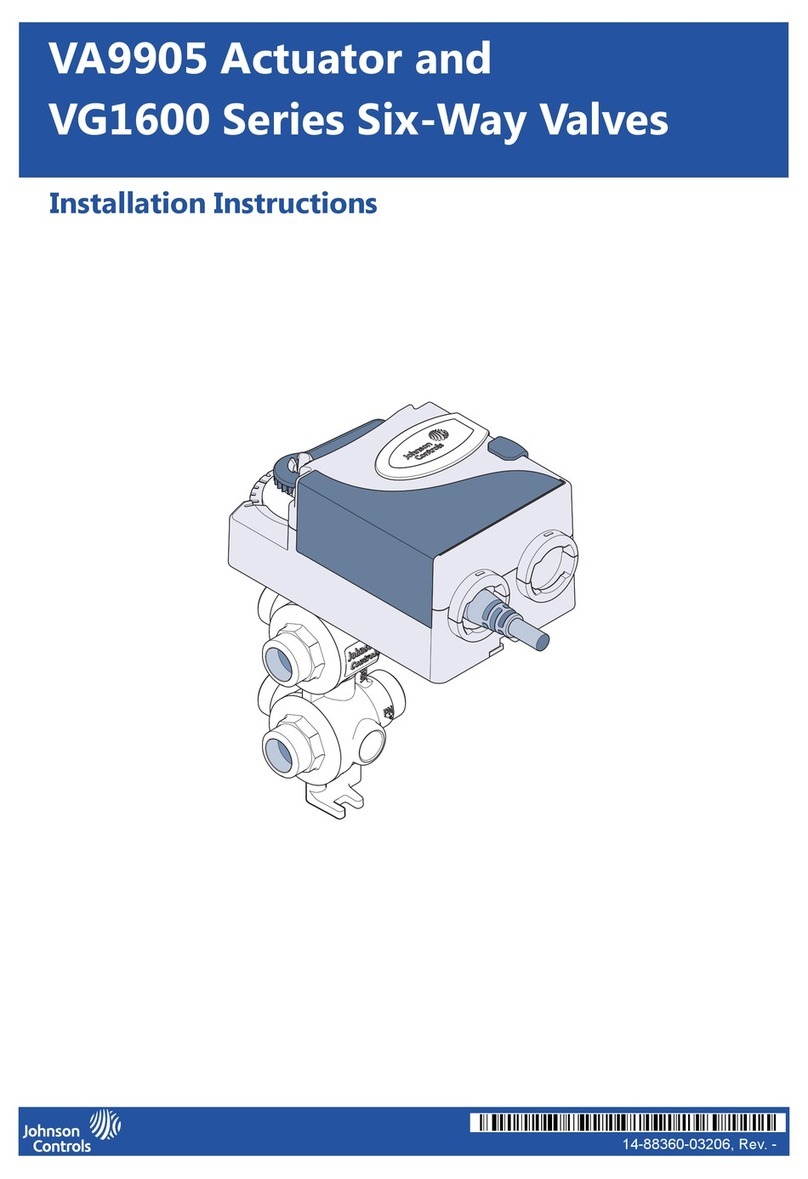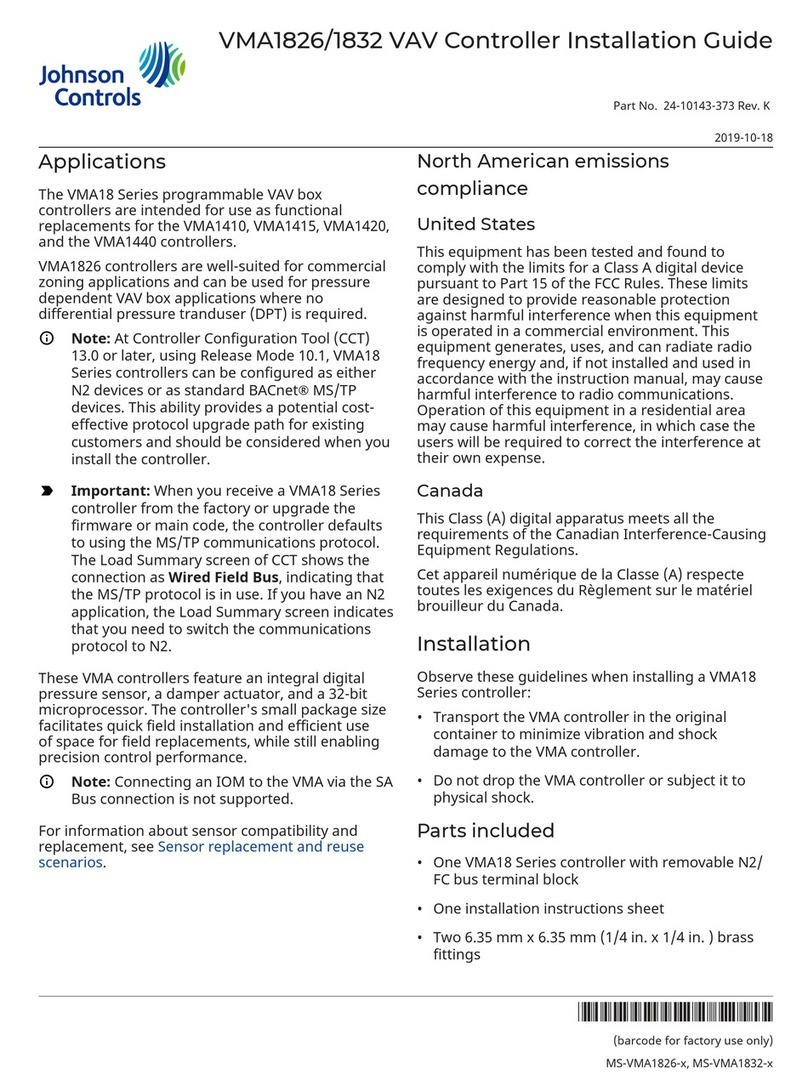
10 M100G Product/Technical Bulletin
Direct Acting Mode Calibration
1. Properly set up the motor actuator for the applied
input. Use a factory installed 500 ohm resistor
between T1 and DC input for 0 to 20 mA signal.
Use a field supplied 750 ohm resistor for 0 to
24 mA and no resistor for DC voltage input.
2. Set the jumpers to direct acting position as shown
in Figure 2.
3. Apply 24 VAC to terminals T1 and T2.
4. Increase the zero adjustment to its maximum and
decrease the span adjustment to its minimum.
Note: Direction indicators for increasing each
adjustment are on the potentiometer.
5. Apply power to the controller that supplies the
DC control voltage (mA) to the motor actuator.
6. Using a DC voltmeter, adjust the controller setpoint
to produce the minimum voltage at which the
actuator will be at its desired full counterclockwise
position.
Note: The motor actuator ignores voltages below the
selected value.
7. Slowly decrease the zero adjustment until the
motor actuator begins to respond. The motor
actuator should start and run clockwise about two
angular degrees.
8. Slowly increase the zero adjustment enough to
return the motor actuator to its normal CCW
position.
9. Leave the zero adjustment set at this point.
10. Adjust the controller setpoint to produce the
maximum voltage at which the actuator will be at
its desired full CW position.
11. Slowly increase the span adjustment until there is
a slight CCW movement of the motor actuator.
The motor actuator should start and back up about
two angular degrees.
12. To be sure complete travel is achieved, the span
adjustment must be decreased just enough to
return the motor actuator to its maximum CW
travel limit.
13. Leave the span adjustment set at this point.
Repeat the preceding steps to verify achievement of
the complete control range. Perform at least three
complete operating cycles of the system before leaving
the installation.
Reverse Acting Mode Calibration
1. Properly set up the motor actuator for the applied
input. Use a factory installed 500 ohm resistor
between T1 and DC input for 0 to 20 mA signal.
Use a 750 ohm field supplied resistor for 0 to
24 mA and no resistor for DC voltage input.
2. Set the jumpers to the reverse acting mode as
shown in Figure 2.
3. Apply 24 VAC to terminals T1 and T2 and wait for
the motor actuator to travel to its full CW limit.
4. Decrease the zero and span adjustments to their
minimums.
Note: Direction indicators for increasing each
adjustment are on the potentiometer.
5. Apply power to the controller that supplies the
DC control voltage (mA) to the motor actuator.
6. Using a DC voltmeter, adjust
the controller setpoint to
produce the maximum voltage
at which the actuator will be
at its desired full CCW
position.
Note: The motor actuator ignores voltages above the
selected value.
7. Slowly increase the zero adjustment until the motor
actuator begins to respond. The motor actuator
should start and run clockwise about two angular
degrees.
8. Slowly decrease the zero
adjustment enough to return
the motor actuator to its
normal CCW position.
9. Leave the zero adjustment set at this point.
10. Adjust the controller setpoint to produce the
minimum voltage at which the actuator will be at its
desired full CW position.
Note: The motor actuator ignores voltages below the
selected value.
11. Slowly increase the span adjustment until there is
a slight CCW movement of the motor actuator.
The motor actuator should start and back up about
two angular degrees.
12.To be sure complete travel is
achieved, the span
adjustment must be decreased
just enough to return the
motor actuator to its
maximum CW travel limit.
13. Leave the span adjustment set at this point.
